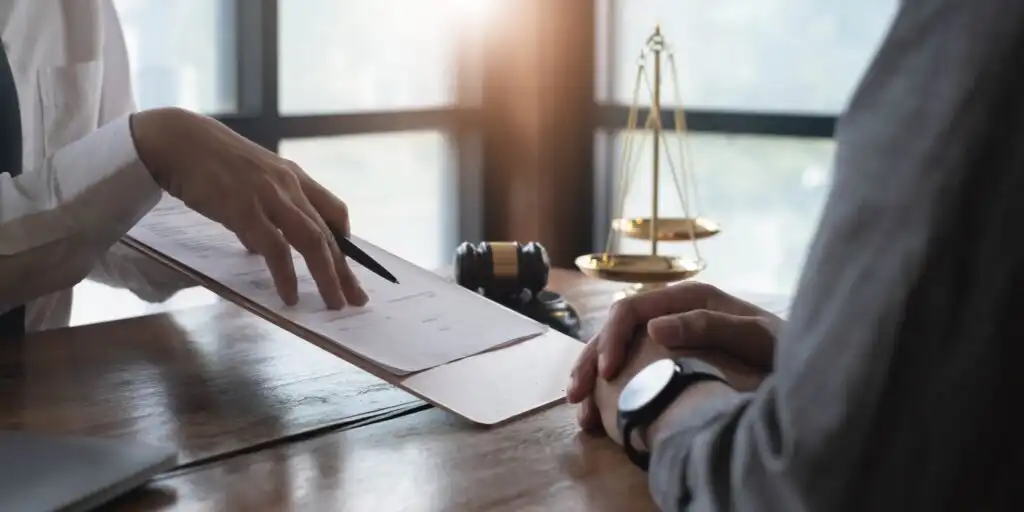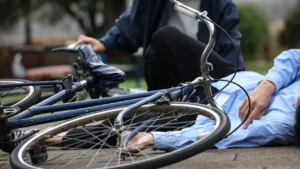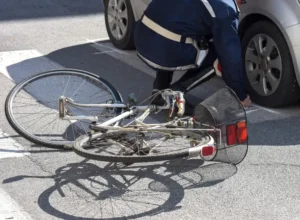Bicycle accidents can be life-changing, leading to serious injuries, financial strain, and emotional distress. Whether you’re an avid cyclist or a casual rider, understanding the bicycle accident laws in your state is crucial for protecting your rights and securing compensation if you’re involved in a crash.
Bicycle laws, including who’s at fault in an accident, how insurance claims are handled, and what legal protections you have, can vary significantly across states. In this blog, we’ll break down the key elements of bicycle accident laws in your state and explain how they affect you as a rider. Whether you’ve already been involved in an accident or are just looking to be prepared, this guide will give you the knowledge you need.
1. State-Specific Bicycle Accident Laws: What to Expect
Each state has its own set of laws that apply specifically to bicycle accidents. These laws dictate how the accident is investigated, who can be held liable, and what kind of compensation you may be entitled to. It’s important to know what your state requires for bicycle safety, helmet usage, and insurance coverage.
Common State Variations:
-
Helmet laws: Some states require cyclists of all ages to wear helmets, while others only require helmets for minors. Failure to wear a helmet can sometimes impact your case if you’re involved in an accident.
-
Bicycle lanes and road use laws: Certain states have specific laws regarding where cyclists should ride on the road (bike lanes, shoulders, etc.). These regulations help determine fault in an accident, especially if the cyclist was in an area where they weren’t supposed to be.
-
Driver responsibility: In most states, drivers are legally obligated to yield the right-of-way to cyclists in certain situations, such as when making a turn. These laws can vary, but knowing your rights is critical.
Tip: Familiarize yourself with the bike laws in your state, especially helmet regulations and bicycle lane rules, as these can affect both your safety and your potential compensation in case of an accident.
2. Who is at Fault in a Bicycle Accident?
Determining fault in a bicycle accident is a crucial part of your claim, and laws about fault can vary depending on the state. In many cases, a cyclist may be injured because of a driver’s negligence or because of poor road conditions. Your state’s laws will dictate who is held responsible and how compensation is awarded.
Comparative vs. Contributory Negligence:
-
Comparative negligence: In most states, the law follows a comparative negligence rule. This means that fault for the accident can be shared between the cyclist and the driver. For example, if the cyclist is found 30% at fault, they may still recover 70% of the damages.
-
Contributory negligence: Some states follow contributory negligence laws, where if the cyclist is found even partially at fault (e.g., running a red light or riding without a helmet), they may be completely barred from recovery.
Tip: In states that follow comparative negligence, it’s important to gather as much evidence as possible, including photos, witness statements, and a police report, to prove that the other party was mostly at fault.
3. Insurance Coverage for Bicycle Accidents
One of the most important considerations after a bicycle accident is how insurance will cover your injuries, especially if you were hit by a motor vehicle. Some states have specific requirements for insurance coverage related to bicycle accidents, while others may rely on general liability or auto insurance policies.
Common Insurance Scenarios:
-
Personal Injury Protection (PIP): Some states have no-fault insurance laws that require drivers to have PIP coverage, which can cover medical expenses and lost wages, regardless of fault. PIP may also cover injuries sustained by cyclists hit by vehicles.
-
Liability insurance: In other states, you may need to file a claim against the driver’s liability insurance if they were at fault. This can cover medical costs, damage to your bicycle, and other losses.
-
Uninsured/underinsured motorist coverage: If the driver who hit you is uninsured or underinsured, some states allow you to file a claim through your own insurance if you have uninsured motorist (UM) coverage.
Tip: Always check your auto insurance policy to see if you have uninsured motorist coverage, as this can be critical if the person who hit you does not have sufficient insurance.
4. Compensation for Bicycle Accident Victims
In the aftermath of a bicycle accident, victims may be entitled to various forms of compensation, depending on the severity of their injuries and the laws of their state. In general, compensation can cover medical bills, lost wages, property damage, and pain and suffering.
Types of Compensation You May Be Entitled To:
-
Medical expenses: This includes hospital bills, rehabilitation, and any long-term care required due to injuries.
-
Lost wages: If your injuries prevent you from working, you may be able to recover lost income for the time you’re unable to work.
-
Pain and suffering: Some states allow you to claim compensation for the physical and emotional distress caused by your injuries.
-
Property damage: If your bike or personal property was damaged in the accident, you may be able to claim compensation for repairs or replacement.
-
Punitive damages: In rare cases, if the other party acted with gross negligence (e.g., driving under the influence), punitive damages may be awarded as a form of punishment.
Tip: Keep thorough records of your medical treatments, bills, and lost income to maximize your chances of receiving full compensation for your injuries.
5. The Statute of Limitations for Bicycle Accidents
Every state has a statute of limitations, which is the time limit within which you must file a lawsuit after an accident. If you wait too long, you may lose your right to pursue compensation for your injuries.
What You Need to Know:
-
State-specific limits: The statute of limitations for bicycle accidents typically ranges from 1 to 3 years, depending on the state. The clock usually starts from the date of the accident or the date you discovered your injury.
-
Exceptions: In some cases, the statute of limitations may be extended, such as if the responsible party was a government entity, or if you were a minor at the time of the accident.
Tip: Contact an attorney as soon as possible after your bicycle accident to ensure that your case is filed within the appropriate time frame.
6. Why You Need a Bicycle Accident Lawyer
Dealing with the aftermath of a bicycle accident can be complicated, especially when navigating state-specific laws, insurance claims, and legal proceedings. An experienced bicycle accident lawyer can help you understand your rights, assess the strength of your case, and guide you through the legal process.
How a Lawyer Can Help:
-
Navigating legal complexities: A lawyer who specializes in bicycle accidents knows the ins and outs of your state’s laws and can help you avoid common pitfalls.
-
Negotiating with insurance companies: Insurance companies often try to minimize payouts. A lawyer can negotiate on your behalf to ensure that you receive fair compensation.
-
Representing you in court: If your case goes to trial, an experienced attorney will represent your interests in court and work to secure the best possible outcome.
Tip: Don’t settle for less than what you deserve—consult with a lawyer who can help you fight for fair compensation.
Conclusion
Understanding bicycle accident laws in your state is critical to ensuring that your legal rights are protected after an accident. From helmet laws and fault determination to insurance coverage and compensation, knowing the ins and outs of your state’s regulations can help you navigate the complexities of your case and maximize your recovery.
If you’ve been involved in a bicycle accident, don’t hesitate to contact an experienced bicycle accident lawyer to help you with your claim. They can ensure that you get the compensation you deserve and guide you through every step of the process.








